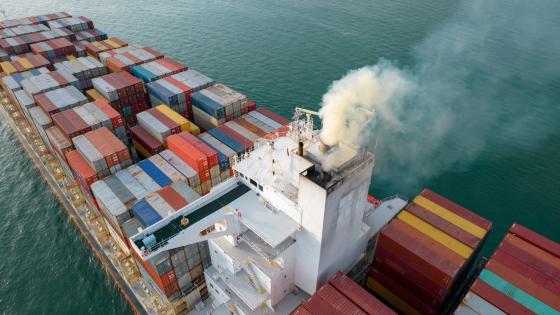A few years ago, Andy Rose of the University of Berkeley started a whole literature on the effects of common currencies on trade. His message was that the effect was very large and this was interpreted as suggesting that the euro would also have a large effect on trade.1 The estimated size of the euro trade effect has since been reduced from very large to modest. According to Baldwin (2006), the bottom line is that the “euro probably did boost intra-Eurozone trade by something like five to ten percent”.2 There are good reasons to focus on the trade in goods effect of the euro since as economists we believe that increasing trade has large welfare gains. Also, the data sets on trade flows on which those effects can be estimated are rich. This is not the case for financial flows. Still, it is surprising that there has been little research on the effect of the euro on trade in financial assets.
The euro’s impact on trade in financial assets should be of interest for several reasons. First, the euro may more directly affect transaction costs on financial markets than on goods markets as it can be considered a direct engine of financial integration. Second, financial integration should generate gains in terms of allocation efficiency and risk diversification. The latter point is all the more important in the eurozone where asymmetric shocks cannot be stabilised by different monetary policies. As in the case of the trade effect of the euro, it is important to estimate both the financial opportunity cost of being outside the eurozone and the cost or gain of the creation of the euro for outsiders.
There is a small, recent literature on the euro-asset-trade issue. For example, Lane (2006) looks at the impact of EMU on bond portfolios. De Santis and Gerard (2006) analyse the impact of EMU on portfolio-weights rebalancing. Another line of research follows the lead of Andy Rose by analysing the financial gravity equation (see Portes and Rey 2005, or Aviat and Coeurdacier 2007).
In some very recent work, we study the euro’s impact on trade in financial assets using financial gravity equations (Coeurdacier and Martin 2007). We use two data sets – a cross-country one on bilateral asset holdings (bonds, equity and banking assets) and a Swedish data set on both holdings of foreign assets and outflows. Sweden is interesting to study because it is a very open country for both trade and financial flows; it is a member of the largest and most integrated regional trade agreement, the European Union, but it is outside the eurozone.
What to expect
The euro may have different effects on the cost of transacting assets: on transactions inside the eurozone, on purchases of euro assets by countries outside the eurozone and on purchases of non euro assets by euro countries. As in trade theory, these changes in transaction costs may also result in diversion.
In addition, and as noted by Lane (2006), the single currency and single monetary policy may increase the correlation between returns of euro assets and make them closer substitutes. This may actually have a negative effect on the holdings of euro assets by countries in the eurozone. The reason is that the increased elasticity of substitution between euro assets magnifies the impact of any remaining transaction cost on cross-border holdings within the eurozone.
We find evidence that the euro affects both transaction costs and the elasticity of substitution, but the effect is different for different classes of assets and also different whether countries are in or out of the eurozone. Our estimates (which depend on our estimated elasticity of substitution between assets) suggest that the transaction costs to buy assets from the eurozone are lower by around 17% for equity and 14% for bonds. This unilateral financial liberalisation effect of the euro benefits both those countries that are in and outside of the eurozone.
In addition to this effect that benefits all countries, countries inside the eurozone benefit from a decrease of transaction costs for equities and bonds respectively of around 10% and 17%. This is the preferential financial liberalisation aspect of the euro. Hence, for a country inside the eurozone, the transaction cost for the cross-border purchase of a stock or a euro bond is lower by around 27% and 31% respectively. Overall, this translates in large effects – maybe too large to believe for some – on cross-border asset holdings. The euro increases by 150% bilateral bond holdings between two euro countries while equity holdings rise by around 45%.
Note that even though the percentage difference in transaction costs inside and outside the euro are estimated to be quantitatively similar on equity and bonds, the impact on holdings is much larger on bonds. The reason is that different bonds are much closer substitutes than different equities and this magnifies the quantity impact of any reduction in transaction costs on bond holdings. These results hold once we control for a relatively large set of variables that might be correlated with being part of the euro (trade linkages, geography, exchange rate volatility...). They confirm those of Lane (2006) on the positive role of the euro on bond holdings between countries of the eurozone, but quantitatively, our estimated effect on bond holdings is smaller. The estimates also confirm that two euro bonds are more substitutable than other bonds: the elasticity of substitution is around three times as much. No such difference exists for equity though.
Contrary to the literature on the euro effect on trade in goods (see Baldwin 2006, and Flam and Nordstrom 2003), we find no evidence that the euro decreases the transaction cost for euro countries of purchasing equity outside the eurozone. In fact, for equities, we find evidence that substantial diversion takes place in the sense that euro countries buy less equity from outside the eurozone than what is predicted by financial gravity equations. This evidence is based on comparing asset trade between euro countries and the Nordic countries in (Finland) and out (Sweden, Norway, Denmark) of the eurozone. Interestingly, no diversion effect seems to operate for bonds. This may be because a significant portion of bonds in these countries are issued in euro.
The evidence of a diversion effect for cross-border asset trade, which has not been found in the case of goods, is also important because it suggests that the euro affected financial flows through a different mechanism than goods trade. In the latter case, Baldwin (2006) argues that the absence of a diversion effect suggests that the introduction of the euro has, in effect, brought down the fixed cost of trading in the euro area, but not transaction costs. The diversion effect we find in the case of financial assets points to a transaction cost story where the relative – not absolute - transaction cost for a euro-based investor to buy assets from the rest of the world has increased with the euro. Also, we find that the euro effect is larger for flows than for stocks in the case of equities and loans. This suggests again that the euro has generated a fall in transaction costs.
One of the messages of Baldwin (2006) on the euro trade effect is that countries do not need to be inside the eurozone to benefit from most of its economic gains. This has some intriguing political economy implications on the future dynamics of monetary integration with potential free-rider problems. For the financial side of the euro story, this message, however, does not hold fully. Outsiders do benefit from lower transaction costs to diversify risk when purchasing euro assets, but the gain is around half what the insiders get. Moreover, the diversion effect should clearly be detrimental to non-euro countries. If assets are imperfect substitutes, the lower demand for non-euro equity (the only asset for which some diversion is suggested by our empirical analysis) implies a lower price of non-euro assets relative to euro assets. This should translate into an increase in the cost of capital for firms outside the eurozone.
Overall, the net effect of the euro on outsiders is ambiguous. In addition to the opportunity cost of missing the gains from preferential financial liberalisation, their diversification opportunities improve and become cheaper, but at the potential cost of a diversion effect that penalises firms which want to raise capital on international markets.
References
Aviat, A. and N. Coeurdacier, 2007, “The Geography of Trade in Goods and Asset Holdings", Journal of International Economics, 71, 22-51.
Coeurdacier, N. and P. Martin, 2007, "The Geography of Asset Trade and the Euro: Insiders and Outsiders", CEPR Discussion Paper 6032.
De Santis R. and B. Gerard, 2006, “Financial Integration, International Portfolio Choice and the European Monetary Union", ECB Working Paper 626.
Flam, H., and Nordstrom, H., 2003, “Trade Volume Effects of the Euro: Aggregate and Sector Estimates", Mimeo Institute for International Economic Studies, Stockholm.
Lane, P., 2006, “Global Bond Portfolios and EMU", International Journal of Central Banking, June.
Portes, R. and H. Rey, 2005, “The Determinants of Cross-Border Equity Flows", Journal of International Economics, 65 (2), 269-296.
Footnotes
1 Rose Andrew K., "Currency Unions and Trade: the effect is large", CEPR Economic Policy 33, October 2001, pp 449-461.
2 Baldwin, R.E., 2006, “In or Out: Does It Matter? An Evidence-Based Analysis of the Euro's Trade Effects”, CEPR, 2006.


